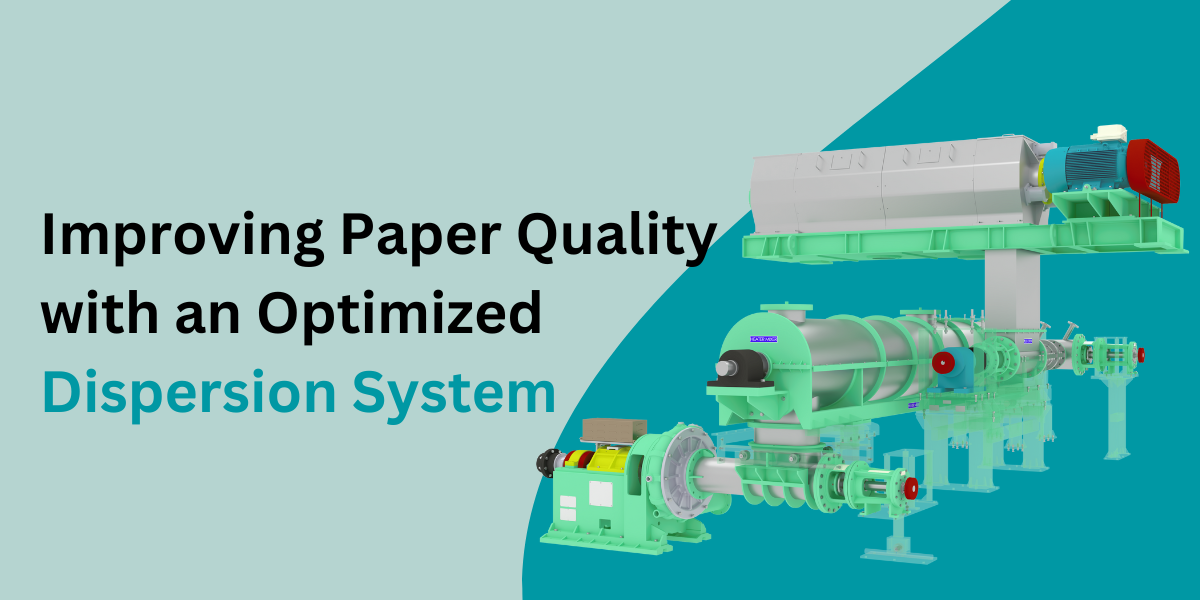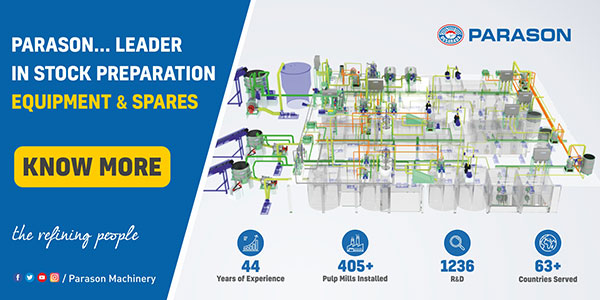Introduction:
In the production of paper, achieving impeccable paper quality is a continuous and evolving process. The paper is crafted from diverse raw materials such as recycled paper, which contains many different types of glues, adhesives, binders, and different printing inks. These raw materials undergo various processing stages before yielding the final product. During these processes, the pulp undergoes further refinement; however, there are still impurities and fiber bonding that require attention to enhance the paper’s quality. This is where a Dispersion System plays a crucial role.
By utilizing the dispersion system in the manufacturing process, you can enhance the quality of the paper. This article delves into the complexities of the dispersion system, offering a guide for those eager to enhance their paper quality standards as good as paper made up of agro pulp or wood pulp.
What Is a Dispersion System?
A disperser typically refers to a device or tool designed to break down or disperse materials in a medium. This term is commonly used in various fields, such as chemistry, physics, and engineering.
A dispersion system is a set of machines used to break down the fiber and improve the quality of the material. It includes a disperser unit, screw face, plug screw, shredder, heater mixer, and in-feeder.
In a paper mill, a dispersion system is an essential part of the equipment used in the pulp and papermaking process. Its primary function is to break down fiber bundles and separate individual fibers from each other. This is an important step in the preparation of pulp, which is the raw material used in paper production.
The Hot Disperser System is engineered to effectively disperse specifications and impurities, including waxes, hot melts, stickies, bitumen, and ink, present in waste paper pulp. The key technology involves the harmonization of multiple forces, namely the high pulp consistency ranging from 38% to 42%, elevating the temperature to 80°C to 110°C, and applying mechanical energy through Ultra-Precision Disperser Segments with micron-level accuracy. The synergy of these forces achieves a balance that significantly enhances the aesthetic properties of the resulting paper.
Key Points:
- Reduction of Specifications in Pulp: The system minimizes undesirable elements in the pulp.
- Utilization of Inexpensive Waste Paper: Allows the use of more economical waste paper.
- Enhancement of Fiber Treatment: Improves the treatment of fibers in the pulp.
- Reduction of Stickies, Hot Melts, etc.: Diminishes the presence of adhesives and other contaminants.
- Improvement in Paper Quality: Results in an overall improvement in the quality of the paper.
- Reduction in Raw Material Costs: Decreases the costs associated with raw materials.
- Better Strength Properties: Provides improved strength characteristics to the paper.
- Enhanced Paper Machine Runnability, Reduced Clothing Costs: Increases the operational efficiency of the paper machine while lowering associated clothing costs.
- Overall Increase in Profitability: Contributes to a boost in overall profitability.
The operation of the Disperser System involves several key processes:
- Increase in Stock Consistency: Elevates stock consistency to the range of 38% to 42%.
- Lump Breakage in Pulp: Breaks down lumps in the pulp, thereby increasing the surface area.
- Temperature Elevation: Raises the temperature of the pulp to a range of 80°C to 110°C.
- Ultra-Precision Dispersion: Achieves precise dispersion with micron-level gap control.
Let’s look into the specific unit machines of the dispersion system.
Dewatering Screw
Equipped with a Pneumatic Loading System, features a conical screw cone and a pneumatically controlled counter pressure cone, ensuring effective dewatering up to 10% consistency with operational flexibility.
Screw Press
Characterized by a single-piece casting with hard-facing edges, achieves a pulp stock outlet consistency of 38% to 42% after the pressing process.
Plug Screw
Designed to prevent steam escape, reducing steam consumption and improving dispersing efficiency, featuring an inlet chute and tapered compression zone.
Shredder
Uniformly shreds thickened stock to increase the surface area, facilitating even steam penetration.
Heater Mixer heats
Shredded stock to 90°C to 100°C with steam nozzles ensuring uniform heating.
In-feeder Screw
Uniformly feeds stock to the disperser.
Disperser
Designed for gentle treatment of fibers at high consistency and temperature, ensuring optimum fiber development and micron-level dispersion of contaminants for an improved aesthetic appearance of the paper.
To know about the top manufacturers of the dispersion system and other paper machines click here.
Advantages Optimized Dispersion System
Now, let’s explore the tangible benefits and transformative impact of employing an optimized dispersion system in the printing realm.
Enhancing Fiber Distribution
Achieving optimal dispersion ensures an even distribution of fibers throughout the paper. This results in a smoother texture and heightened print clarity. To get this efficiency done, an optimized dispersion system is needed to be installed at your paper mill.
Precision in Coating Application
The application of coatings is an art in itself. The optimized dispersion system ensures precision, coating each fiber uniformly. This not only enhances the paper’s surface but also contributes to improved ink absorption.
Unmatched Print Resolution
With fibers uniformly distributed and coatings applied with precision, the result is a print resolution that stands unparalleled. Every detail, every nuance, captured with vivid clarity.
Enhanced Colour Reproduction
Say goodbye to faded prints. The optimized dispersion system ensures vibrant and true-to-life colour reproduction. Whether it’s a business report or a cherished photograph, expect colours to pop with brilliance.
Increased Durability
Quality extends beyond aesthetics. Papers treated with the optimized dispersion system exhibit enhanced durability, resisting wear and tear. This ensures your documents withstand the test of time.
FAQ
How does the Optimized Dispersion System enhance print clarity?
The system ensures even fiber distribution and precise coating, resulting in enhanced print clarity. Every detail is captured with finesse.
Is the Optimized Dispersion System compatible with all types of printing?
Yes, the system is versatile and compatible with various printing methods, from laser to inkjet, ensuring consistent quality across platforms.
Can the benefits of the optimized dispersion system be realized with any paper?
While compatible with many papers, choosing a quality paper is crucial. The system works best when paired with papers designed for optimal dispersion.
How often should the dispersion system be calibrated for optimal performance?
Regular calibration is essential. Aim for a quarterly schedule to maintain peak performance and ensure consistently high-quality prints.
Are there any environmental benefits associated with using an optimized dispersion system?
Yes, the system’s precision in coating application often results in reduced ink consumption, contributing to a more eco-friendly printing process.
Can the optimized dispersion system be retrofitted into existing printers?
In many cases, yes. However, it’s advisable to consult with a professional technician to assess compatibility and ensure seamless integration.


